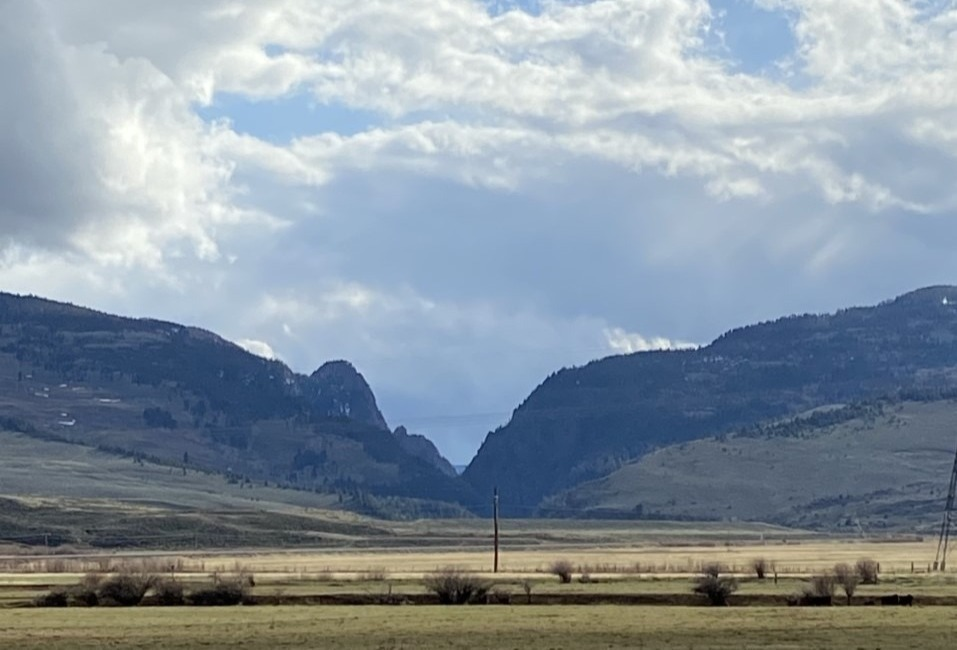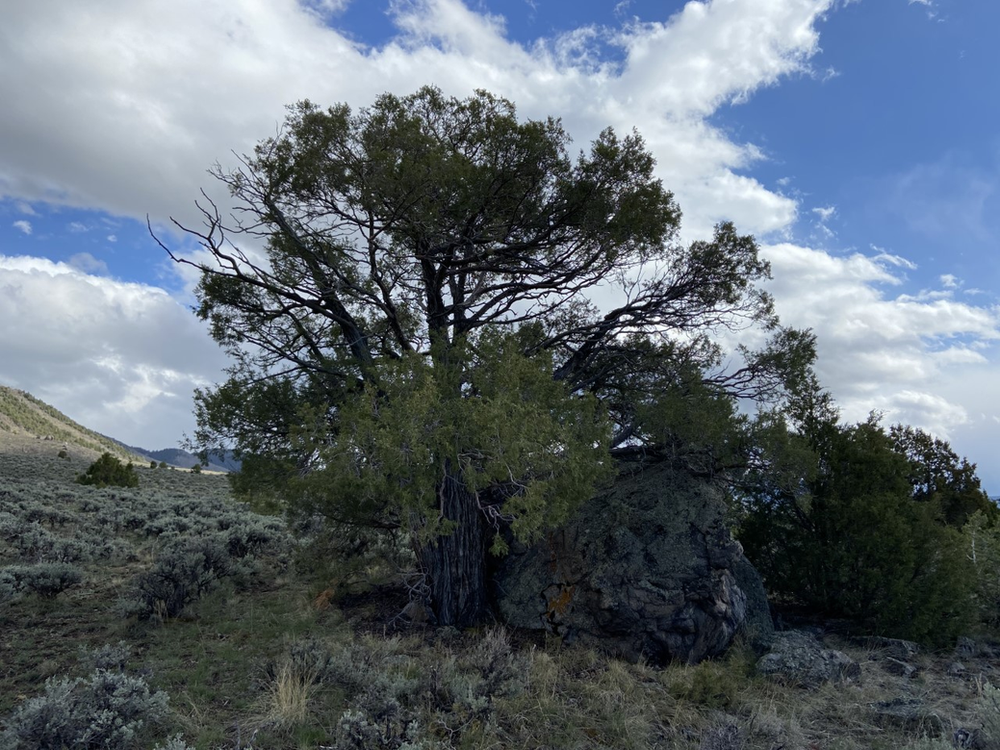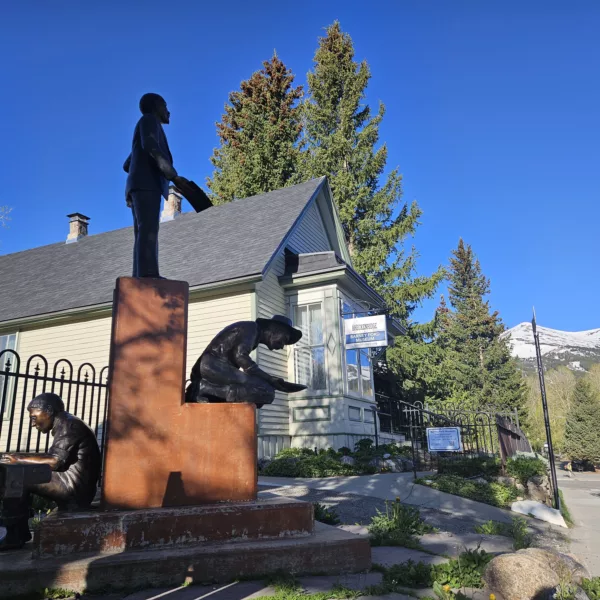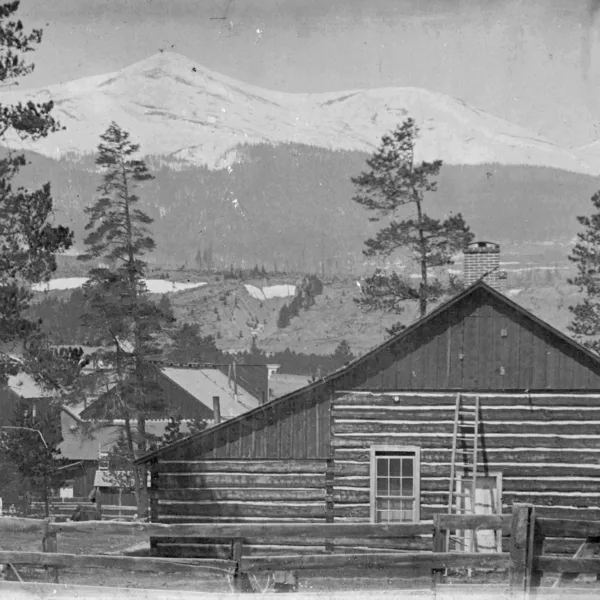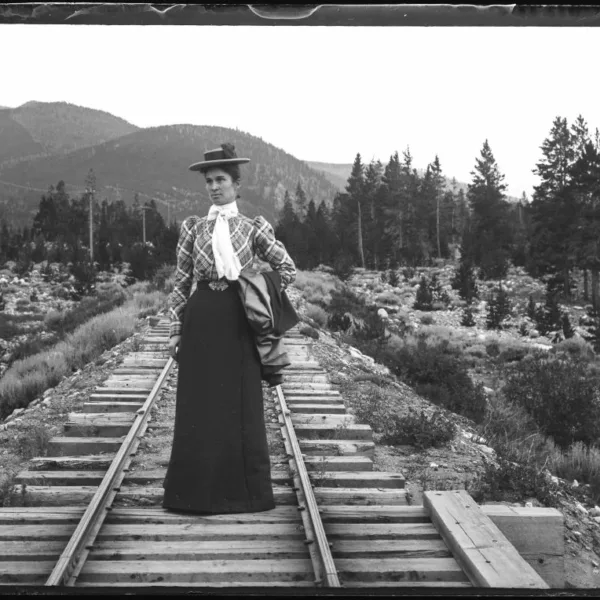Sam Adams and The Colorado River Exploring and Prospecting Party
May 15, 2021 | Category: Our Collective History
Breckenridge claims no shortage of thimbleriggers and flim-flam artists. Famous criminals include Pug Ryan and his murderous robbery in 1898 and Scoop Daniels’ embezzlement and disappearance in the 21st Century. But no one conned the community of Breckenridge like Sam Adams, “Captain Sam Adams” he insisted. Competing with John Wesley Powell to seek a navigable water route to the Pacific, Sam Adams came to Breckenridge in 1869 to begin his exploration.
In 1869, Breckenridge was just a few years old. The heady days of the early gold rush had faded and the town fumbled along with a reduced population of miners, merchants, and a “motley group of rough individuals,” according to travel writer Bayard Taylor in 1866. Yet the west was an exciting and unexplored place. The soon-to-be-famous John Wesley Powell was preparing for his expedition down the Green River to the unknown Colorado.
Sam Adams navigated the waters of the Lower Colorado River as early as 1864, attempting to establish a river freighting company. Shallow-draft steamboats plied the river from the mouth at the Gulf of California upstream, carrying freight and military supplies over 100 miles inland. Using this experience as his calling card, Adams attempted to talk his way into Powell’s expedition, then gathering at Green River, Wyoming, where the new transcontinental railroad delivered Powell’s boats and supplies.
Armed with a letter of thanks from former Secretary of War under President Lincoln, Edwin Stanton, Adams flourished the missive as though it were his ticket to Powell’s expedition. But Powell’s exploratory party was completely self-funded. Powell had no reason to bring on Stanton’s recruit, especially one that acted like a commander, according to Wallace Stegner in his Powell biography, Beyond the Hundredth Meridian.
Adams was full of unfounded confidence. So certain of the ease of a riverway from the mountains of the Colorado Territory to the Pacific, he convinced himself that it was an inevitability. A mere two-miles of drop from the Continental Divide to the ocean could be covered in short months, he thought.
Undaunted by Powell’s rejection, Adams determined to find the river route on his own. Yet he lacked resources, supplies, foodstuffs, boats, weapons, even maps. His only possession was his most valuable: his gift of persuasion.
While Powell took on the mission to travel the Green River to its meeting with the Colorado River and explore the unknown from there, Adams sought to connect to the Colorado River by following one of its major upper tributaries: the Blue River. He passed through Georgetown on his way to Breckenridge, and the newspaper of that community provides some of our most detailed descriptions of Adams and his plans. The Colorado Miner (Georgetown) editorialized: “…the trip seems to us as a very hazardous and untimely one.”
Adams’s confidence in his own abilities coupled with his surety that the river route was easily navigable persuaded the people of Breckenridge to support him. In Breckenridge, Adams found a willing community, one that dreamt of the same glory and riches as he. Even the name drew them in: The Summit County and Colorado River Exploring and Prospecting Party.
The people of Breckenridge outfitted him completely. Adams’ manuscript lists the resources that Breckenridgians provided: four boats (of green wood) twenty-two feet long and four feet wide; three months’ provisions including bacon, flour and coffee; and muzzle-loading rifles and revolvers with two hundred rounds of ammunition each.
Eleven volunteers from Breckenridge, all miners “of experience in the rough ways of an adventurous life” accompanied Adams. Their kit included their miners’ tools, and they took opportunities to pan for gold along the first few miles of their route.
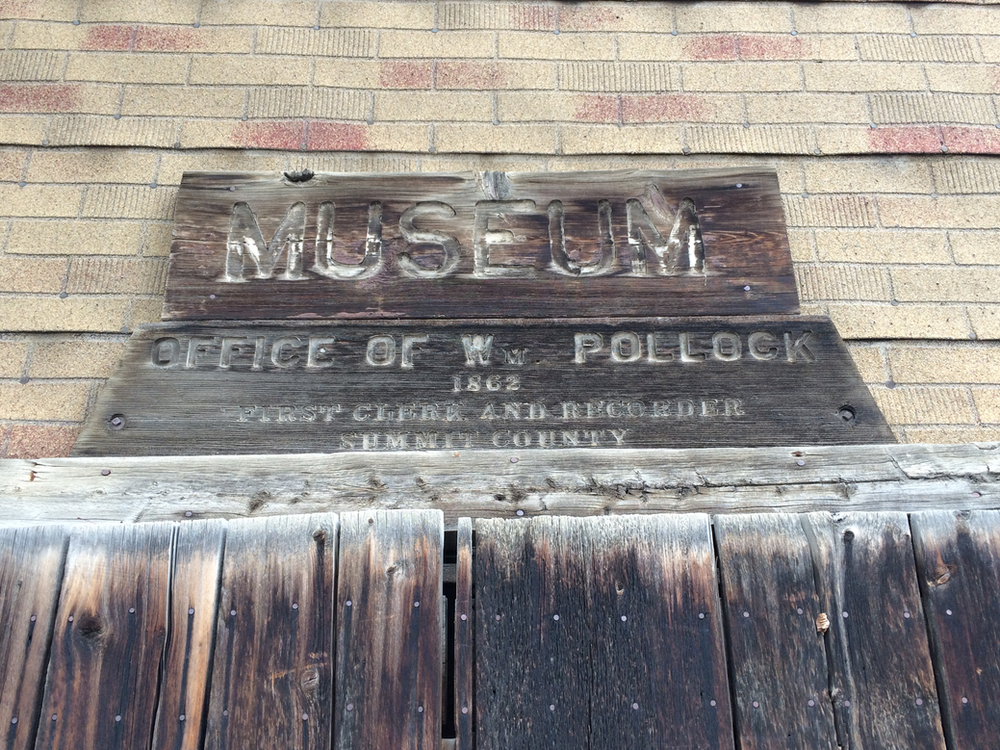
The Colorado Miner newspaper was skeptical of Adams’ expedition, but the people of Breckenridge were taken in. Prominent citizens took active roles. County Clerk W.P. Pollock was treasurer of the expedition. The send-off party included hotelkeeper Rankin and Judge Silverthorn.
Of the people of Breckenridge, Adams wrote: “…parting with such friends. Here upon the extreme limits of civilization I had unexpectedly found a community which in intelligence, enterprise, moral worth were superior to that of any other I had ever met.”
The expedition launched on the Blue River, departing Breckenridge on Monday, July 12, 1869, in two of the four boats. They put in 2.5 miles below the town, about where the Breckenridge Building Center is located today. The other two boats were carried by wagon to a point 12 miles below town. Before Dillon Reservoir, those twelve miles would measure to about where the Town of Silverthorne is presently located. The town would later be named for Judge Silverthorn (no “e” on the end).
On their first night out, the group enjoyed bread given by Mrs. Silverthorn, who was known for her delectable baked goods. On the morning of their departure, an assemblage gathered to send them off with a speech by Judge Silverthorn and cheers from the crowd. Adams adorned his boat with a flag made by the ladies of Breckenridge: “From Western Colorado to California, Greeting.” Judge Silverthorn presented Adams with a young dog, about which we will never hear again. Adams shouted the command “Cut Loose” and they were off.
Disasters struck immediately. Three of the four boats swamped in “Rocky Canyon” at the rapids known today as Boulder Creek, destroying one boat and losing supplies. Three men deserted the next day. Less than a week after departure, one of the members walked back to Breckenridge for “instruments” and matches. By July 21, another boat was demolished in rapids under the reservoir we call Green Mountain, and four more volunteers abandoned the trip and walked back to Breckenridge.
On July 22, the Colorado Miner newspaper reported from the men who returned to Breckenridge that the “watery terrors were intensified by every mile of advance.” They hadn’t even yet arrived at the Grand River.
Limping along with two boats and a much-reduced crew, Adams made it to the confluence of the Blue and Grand Rivers in just over a week. The river we know today as the Colorado between the headwaters and the confluence with the Green River was called the Grand River at that time.
Adams spent a week at the confluence (near today’s Kremmling), during which time he sent another man to Hot Sulphur Springs to send and retrieve mail and supplies. According to Stegner, they needed more matches.
On July 30, Adams wrote: “I inspected the Grand Canyon immediately below us, and find it, unexpectedly, to be very favorable.” Indeed, the first four miles below the confluence flow through beautiful country on sparkly flat water until the chasm we know today as Gore Canyon.
Adams called it the Grand Canyon. Powell dubbed it Cedar Canyon during his exploratory expedition of 1868. Today, boaters know this section of river to be rowdy under good conditions, with solid Class IV and V rapids.
It took Adams four days to travel ¾ of a mile, lowering his boats down each rapid using ropes. One boat was lost almost immediately. By August 7, the last boat was demolished. All supplies and personal gear disappeared in the rapids. The survivors were heartened by finding a haunch of bacon washed upon the shore.
Adams and his remaining crew lashed together a raft, then another and another. He finally gave up the expedition on August 13, upstream from the town we know as Dotsero. According to The Colorado Miner, Adams returned to Breckenridge on August 26, though there is no record of how he was received. He maintained his positivity: it was a “wonderful country opened up” he proclaimed. To his credit, Adams was the first to descend the Upper Colorado River and none of his crew died.
Mark Fiester in Blasted, Beloved Breckenridge shared the story of Captain Sam Adams, quoting Stegner’s book to populate most of the chapter. It was Fiester who dubbed Adams’ mission the “Breckenridge Navy.” This is an inaccurate name for the exploration. A Navy is a government military expedition and that was not the case with neither Powell nor Adams. These were self-created and self-funded journeys. Both Adams and Powell sought government appropriations to reimburse their journeys after the fact. Adams was never successful in gathering a cent.
Stegner calls Adams “harebrained,” “lunatic,” and “a bag of wind.” He may well have been. To his dying day, Adams bitterly carried a grudge about lack of recognition and reimbursement, and for the fame that Powell achieved. One writer observed that Adams may have gained the recognition he sought for “opening the country” had he not tried so vehemently to belittle Powell.
Wallace Stegner is a Pulitzer-prize winning author with a sharp sense of humor. For a very entertaining, accurate, and well-researched account of Sam Adams, the Colorado River Exploring Party, and John Wesley Powell, see his seminal work: Beyond the Hundredth Meridian.
To learn more about Breckenridge history, visit a museum, take a guided tour, or check out our blog articles.
Written by: Leigh Girvin


